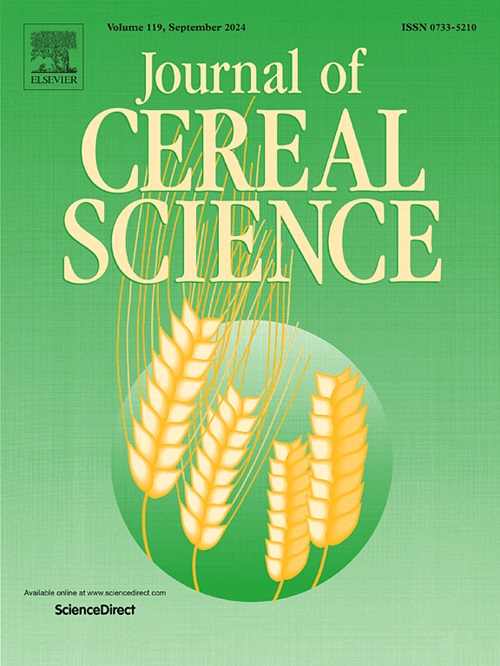HS-SPME/GC-MS-based multivariate statistics to discriminate differences in volatile flavors, amino acids, and fatty acids during oat fermentation
IF 3.7
2区 农林科学
Q2 FOOD SCIENCE & TECHNOLOGY
引用次数: 0
Abstract
This study was conducted to evaluate the effects of microbial (Monascus anka) fermentation on the volatile flavor compounds (VFCs), free amino acids (FAAs) and free fatty acids (FFAs) in oats (Avena sativa L.). The key volatile components were identified by HS-SPME-GC-MS technique combined with multivariate analysis. 55 VFCs in unfermented oats (UFO) and 82 VFCs in solid-state fermented oats (SSFO) were detected. Moreover, 8 key volatile compounds in UFO and 11 key volatile compounds in SSFO with OAV>1 were identified respectively, of which esters and terpenes could be used as potential volatile flavor markers to distinguish UFO and SSFO. The proportion of unsaturated fatty acids (dominated by linoleic acid and linolenic acid) increased 14.76 % in SSFO, compared in UFO. Fermentation significantly increased the FAAs content in SSFO, which was 18.18 times higher than that of UFO. Interestingly, FAAs and FFAs were closely (r2 > 0.97, p < 0.01) related to the VFCs in SSFO. Therefore, microbial fermentation changed the types and contents of VFCs and non-VFCs in oats, which enriched a special flavor of functional oat-foods.

基于HS-SPME/ gc - ms的多变量统计区分燕麦发酵过程中挥发性风味、氨基酸和脂肪酸的差异
本试验旨在研究微生物(红曲霉)发酵对燕麦挥发性风味化合物(vfc)、游离氨基酸(FAAs)和游离脂肪酸(FFAs)的影响。采用HS-SPME-GC-MS技术结合多变量分析对主要挥发性成分进行鉴定。在未发酵燕麦(UFO)和固态发酵燕麦(SSFO)中分别检测到55个vfc和82个vfc。此外,通过OAV>;1分别鉴定出UFO中的8种关键挥发性化合物和SSFO中的11种关键挥发性化合物,其中酯类和萜烯类可作为区分UFO和SSFO的潜在挥发性风味标记物。不饱和脂肪酸(以亚油酸和亚麻酸为主)的比例在SSFO中比在UFO中增加了14.76%。发酵显著提高了SSFO中FAAs的含量,是UFO的18.18倍。有趣的是,FAAs和FFAs与SSFO的vfc密切相关(r2 > 0.97, p < 0.01)。因此,微生物发酵改变了燕麦中vfc和非vfc的种类和含量,丰富了功能性燕麦食品的特殊风味。
本文章由计算机程序翻译,如有差异,请以英文原文为准。
求助全文
约1分钟内获得全文
求助全文
来源期刊

Journal of Cereal Science
工程技术-食品科技
CiteScore
7.80
自引率
2.60%
发文量
163
审稿时长
38 days
期刊介绍:
The Journal of Cereal Science was established in 1983 to provide an International forum for the publication of original research papers of high standing covering all aspects of cereal science related to the functional and nutritional quality of cereal grains (true cereals - members of the Poaceae family and starchy pseudocereals - members of the Amaranthaceae, Chenopodiaceae and Polygonaceae families) and their products, in relation to the cereals used. The journal also publishes concise and critical review articles appraising the status and future directions of specific areas of cereal science and short communications that present news of important advances in research. The journal aims at topicality and at providing comprehensive coverage of progress in the field.
 求助内容:
求助内容: 应助结果提醒方式:
应助结果提醒方式:


